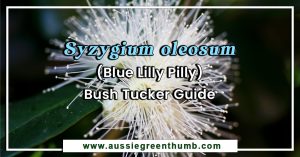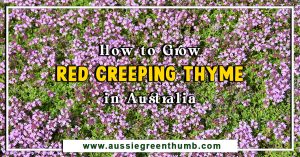Being one of the most widely cultivated species of its genus, the Westringia fruticosa is a very tough native shrub that can offer growers both decorative qualities and practical applications within their landscapes.
This particular species has become a very popular choice as a garden plant for avid and new gardeners alike thanks to its tough nature, captivating natural components and its easy growing attitude.
Here is everything you need to know to grow and care for your Westringia fruticosa.
More...
Genus | Westringia |
|---|---|
Species: | W. fruticosa |
Family: | Lamiaceae |
Common Names: | Coastal Rosemary, Australian Rosemary, Coastal Westringia |
Location: | Outdoor |
Type: | Shrub |
Growth: | 1 to 2 metres tall, 4 to 5 metres wide |
Sun requirements: | Full sun to part shade |
Foliage Colour: | Green |
Flower Colour: | White |
Flowering: | Spring & summer |
Maintenance level: | Low |
Poisonous for pets: | Non-toxic to cats and dogs |
About Westringia fruticosa
The attractive ornamental evergreen shrub of Westringia fruticosa features dense fine grey-green foliage with masses of delicate white to pale lilac flowers, spotted with purply specks.
The luscious and prolific growing habit of this shrub will attract local wildlife like birds, bees, butterflies and other insects so it is also perfect for native gardens. ‘Fruticosa’ means shrubby and this species will grow as a large, sprawling shrub if left unclipped.
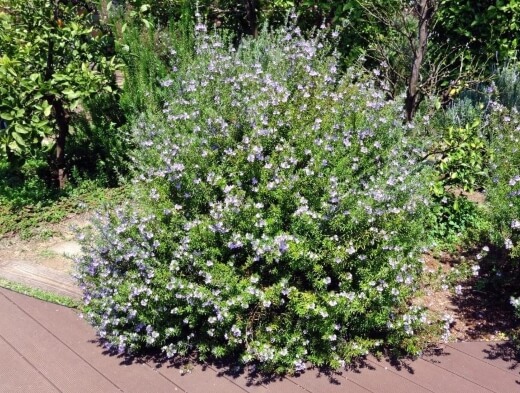
The Westringia genus contains 33 species of shrubs a part of the Lamiaceae family that are all native plants. Westringia fruticosa, also known as Coastal Rosemary, Australian Rosemary or Coastal Westringia, is a species native to the coastal regions of eastern Australia where they commonly grow on cliffsides alongside the ocean.
These shrubs naturally thrive in warm climates in which they can flower prolifically year long however as garden plants, they are known to bloom in spring and summer generally.
This plant is fast-growing, reaching sizes of around 1 to 2 metres tall and 4 to 5 metres wide in most gardens. Its growing habit is rounded and dense, featuring small leaves grown as frond-like foliage that appears quite compact.
Ideal for coastal gardens with a Mediterranean climate, these hardy shrubs can also grow in other conditions being well adjusted to our endemic conditions.
Despite their resemblance and acquaintance to rosemary, these shrubs don’t have a strong aroma but are rather used for their ornamental and functional purposes.
Coastal Rosemary Landscaping Applications
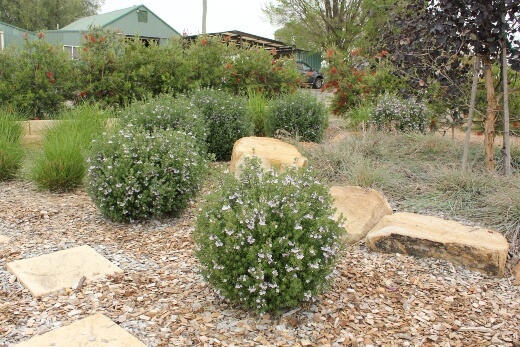
Source: andreasensgreen.com.au
Its relaxed open form, soft colouring and abundant flowering make this plant perfectly suited for many different garden settings, whether rugged or more orthodox.
These shrubs can respond well to light and frequent pruning so you can control the shape and growth of your plant quite extensively. This specific species of Westringia is widely cultivated and used as a native hedge plant.
Here are some popular landscaping positions for Westringia fruticosa:
- Decorative shrub
- Feature in native gardens
- Formal or relaxed hedging and screening
- A boundary for retaining walls
- Large container plant
- Box or topiary projects
How to Grow Westringia fruticosa
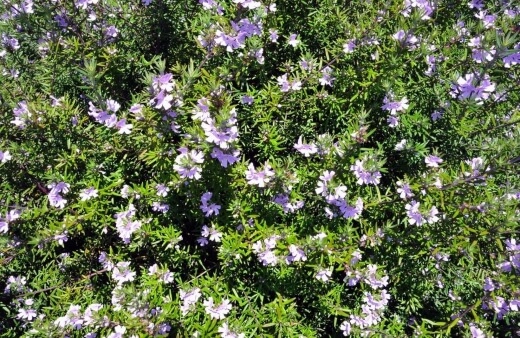
Healthy young tubestock plants with new roots are readily available in garden centres and nurseries where establishing the plant in your garden can be quick and reliable.
Alternatively, these plants can also be effectively propagated using stem cuttings. It is recommended to grow and propagate in early spring as the roots of your plant will develop and establish themselves faster in warmer conditions.
Propagating Coastal Rosemary using Cuttings
- Choose healthy stems to take your cuttings from.
- Using a sharp and clean pair of scissors or garden shears, take a few cuttings by snipping below leaf nodes on your stems.
- Remove the small leaves from the bottom two nodes of your stems.
- Take multiple cuttings to increase your chances of successful establishment.
- Prepare well-draining containers filled with a quality potting mixture. A mix of mostly perlite with some peat moss is recommended.
- Place your cuttings into your containers or growing trays, planting the end of the cuttings that were stripped into the soil.
- Water well and keep your soil mix lightly moist at all times. Try to avoid letting it dry out completely.
- Position the cuttings in a well-lit location away from direct sunlight, drafts or any air conditioning units.
- New healthy roots can take around 2 months to start to develop.
- Once you have enough new root development you can move your cuttings to their forever homes, planting them into rich organic soil that is well-draining.
(Our previous guidance featured the use of peat/sphagnum moss. However, acknowledging its environmental impact, we've altered our suggestions to emphasize alternative options that are just as effective, if not better. Check out our detailed guide for peat moss and its alternatives.)
Planting Australian Rosemary
Planting should be done in spring to early summer during the plants' active growing season and while conditions are warmer.
Westringias are known to be adaptable so they can grow and be placed in many different locations in your garden or as a large container plant. Water well after planting to help settle the roots in the soil.
Here are the ideal conditions for Westringia fruticosa to grow best. Consider these before planting to make sure you find the most suitable location in your landscape.

Source: australianoutbackplants.com
Lighting Needs
This shrub will grow best in full sun but can also grow in part shade. Growth may be slower and blooms may be less prolific with less sunlight.
Ideal Soil for Coastal Westringia
Tolerant to a variety of soils, this plant can grow in most soil types, even very sandy soils. Ideal soil must be well-draining and light. For use as a potted plant, using an organic potting mix rich in nutrients is recommended.
Temperature & Humidity
Westringia fruticosa will grow best in warm Mediterranean climates with stable humidity levels. However, they can also grow in slightly cooler climates as long as freezing temperatures are avoided.
General garden humidity levels should be sufficient but if you live in a drier region, you can mist frequently to help boost moisture levels.
How to Plant Coastal Westringia
Garden Planting
- Select a planting location in your garden that receives full sun to partial shade. The more sun the better.
- Using a spade or shovel, dig your planting hole so that it is at least twice as wide and to a similar depth as the root ball.
(See our review of the best spades and shovels you can get online.) - Gently remove your plant from its current container, being careful not to disturb the roots too much.
- Place your plant into the hole and backfill with soil until the entire root ball is covered and the plant feels stable.
- Lightly firm the soil and water well.
- You can optionally add some organic mulch near the base of your plant, being careful not to place the mulch too close to the trunk.
- Keep the soil moist for a few weeks while the plant establishes itself.
- Add some native fertiliser every so often to encourage healthy root growth.
Planting Westringia fruticosa in a Pot
- Your containers should feature good drainage and be at least double the size of the selected plant.
- Fill your container with a quality potting mixture.
- Gently remove your plant from its current container and try disturbing the roots as little as possible.
- Place your plant into your container and backfill with your potting mix.
- Water well after planting and keep the soil lightly moist but not waterlogged.
- Place your potted Westringia in a well-lit, warm location with as much full sun as possible.
Coastal Rosemary Care Tips

Source: bushmagik.com
These shrubs are tolerant to drought, salt, cold and moisture once established. They are also frost resistant up to -5°C but will start to struggle in periods of long exposure.
Being well-adjusted to our climates, these plants should generally be low-maintenance and self-sufficient planted in Australian gardens. Here are some quick care tips for Westringia fruticosa.
Ideal Watering Routine
It is recommended to mulch and water regularly while your plant is establishing itself until around 12 weeks. Thereafter, water moderately to keep your soil lightly moist.
These plants can tolerate some drought so they don’t have high water needs. They do however hate sitting with wet feet, so try to avoid overwatering as this can lead to other issues.
Fertilising Coastal Westringia
For an added boost during the growing seasons, you can fertilise in autumn with some manure and then with some mineral fertiliser or a slow-release native fertiliser every 30 days or so in spring.
Get to know more about different fertilisers and how to make your own using our Australian garden fertiliser users guide.
Pruning Westringia fruticosa
Light pruning is best done during spring to early summer after flowering. It is advised to only cut back soft, leafy growth and not too much of the hardwood.
For hedge pruning, trim frequently and lightly to keep your hedge tidy and to encourage consistent dense growth. Prune to keep a more formal shape or leave it unclipped for a bushier more wildlife-friendly plant.
Here are more tips on how to prune Australian native plants.
Westringia fruticosa Hedge & Screening
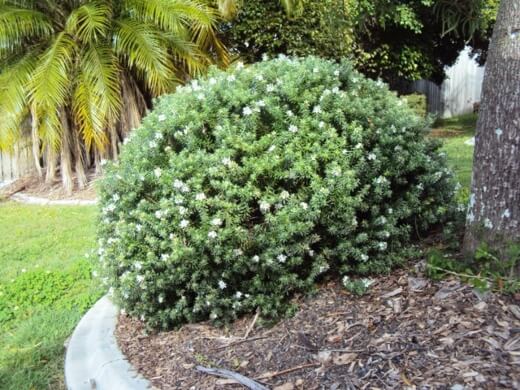
Source: antzplants.com.au
- It is recommended to plant at least 50cm apart for hedges and screens.
- Low-growing hedge plants that reach 1 to 1.5 metres like this species perform best when spaced 50cm apart.
- Some areas may have certain laws or local legislations that govern which plants can be planted as hedges and how tall they can be.
- This shrub is known to be an excellent hedge plant that responds well to light and frequent pruning to keep tidy and maintain shape.
- When laying your hedge, be sure to use well-draining soil and the use of some organic compost can also help when establishing your hedge.
Common Westringia fruticosa Pests & Diseases
These shrubs are very resistant to pests and diseases, rarely being affected by any problems. They are however sensitive to being overwatered.
Letting your plant sit in too much water can lead to root rot which can severely stunt the growth and appearance of your Westringia fruticosa. Avoid this by sticking to the recommended watering routine and always first check your soil to see if water is needed.
Another less common issue can be the yellowing of the plants’ foliage. This can indicate soil issues like too much phosphorus, an iron deficiency or the incorrect pH in your soil. In severe cases, soil testing kits can be used to see how you can improve your soil.
Coastal Westringia Frequently Asked Questions
Is Westringia a rosemary?
This particular evergreen shrub known as coastal rosemary is a type of mint native to Australia. It however does not share similar aromas to that of rosemary or mint plants.
Are Westringia roots invasive?
The roots of the Westringia species are known to be non-invasive.
What is the smallest Westringia?
Westringia fruticosa ‘Grey Box’ is the smallest cultivar of the popular Westringia varieties available. It is a slow-growing, smaller variety growing up to 40 to 50 centimetres.
With very compact foliage, this variety is widely used as a low hedge plant.
If you’re looking at growing other Australian natives, be sure to check out our helpful gardening guide below for more information:

Transform Your Garden with the Stunning Colours of Westringia fruticosa
If you’re looking for a fast-growing and tough native shrub that bursts with colourful flowers, this stunning Westringia species may be the perfect addition to your garden.
Requiring little hassle and suited to any style of Australian garden, this plant can make for an excellent ornamental shrub or formal hedge. Being a widely used and adored species, the Westringia fruticosa may be the perfect pick for your next garden plant.
Published on May 8, 2022 by Nathan Schwartz
Last Updated on February 26, 2024


